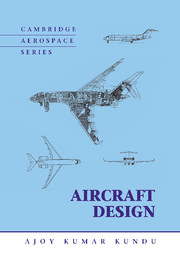Book contents
- Frontmatter
- Contents
- List of Symbols and Abbreviations
- Preface
- Road Map of the Book
- 1 Introduction
- 2 Methodology to Aircraft Design, Market Survey, and Airworthiness
- 3 Aerodynamic Considerations
- 4 Aircraft Classification, Statistics, and Choices for Configuration
- 5 Aircraft Load
- 6 Configuring Aircraft
- 7 Undercarriage
- 8 Aircraft Weight and Center of Gravity Estimation
- 9 Aircraft Drag
- 10 Aircraft Power Plant and Integration
- 11 Aircraft Sizing, Engine Matching, and Variant Derivative
- 12 Stability Considerations Affecting Aircraft Configuration
- 13 Aircraft Performance
- 14 Computational Fluid Dynamics
- 15 Miscellaneous Design Considerations
- 16 Aircraft Cost Considerations
- 17 Aircraft Manufacturing Considerations
- Appendix A Conversion
- Appendix B International Standard Atmosphere
- Appendix C Aerofoils
- Appendix D Case Studies
- Appendix E Tire Data
- References
- Index
17 - Aircraft Manufacturing Considerations
Published online by Cambridge University Press: 05 June 2012
- Frontmatter
- Contents
- List of Symbols and Abbreviations
- Preface
- Road Map of the Book
- 1 Introduction
- 2 Methodology to Aircraft Design, Market Survey, and Airworthiness
- 3 Aerodynamic Considerations
- 4 Aircraft Classification, Statistics, and Choices for Configuration
- 5 Aircraft Load
- 6 Configuring Aircraft
- 7 Undercarriage
- 8 Aircraft Weight and Center of Gravity Estimation
- 9 Aircraft Drag
- 10 Aircraft Power Plant and Integration
- 11 Aircraft Sizing, Engine Matching, and Variant Derivative
- 12 Stability Considerations Affecting Aircraft Configuration
- 13 Aircraft Performance
- 14 Computational Fluid Dynamics
- 15 Miscellaneous Design Considerations
- 16 Aircraft Cost Considerations
- 17 Aircraft Manufacturing Considerations
- Appendix A Conversion
- Appendix B International Standard Atmosphere
- Appendix C Aerofoils
- Appendix D Case Studies
- Appendix E Tire Data
- References
- Index
Summary
Overview
Cost analysis and manufacturing technology are subjects that require specialized instruction in academies, and they are not the main topics of this book. They are included to make readers aware that the classical aeronautical subjects of aerodynamics, structures, and propulsion are not sufficient for a successful aircraft design. Cost analysis and manufacturing technology must be considered during the conceptual design study and integrated with classical aeronautical subjects. The following terms are used extensively in this chapter; some were referred to previously:
Design Built Team (DBT): This is a team of hand-picked, experienced engineers and specialists drawn from various related disciplines, who synthesize design for DFM/A considerations in multidisciplinary interactions with the classical subjects.
Design for Manufacture and Assembly (DFM/A): This is an engineering approach with the object of minimizing costs of production without sacrificing design integrity.
Integrated Product and Process Development (IPPD) (also known as Concurrent Engineering): This offers an environment in which DBT uses IPPD to synthesize the trade-off studies in a multidisciplinary study to arrive at the best value for the product as a global optimum, rather than optimizing to a particular design study. DFM/A is part of IPPD.
Design for Six Sigma (DFSS): This is an integrated approach to design with the key issue of reducing the scope of mistakes and inefficiencies – that is, making a product right the first time to prevent the waste of company resources. […]
- Type
- Chapter
- Information
- Aircraft Design , pp. 551 - 574Publisher: Cambridge University PressPrint publication year: 2010



